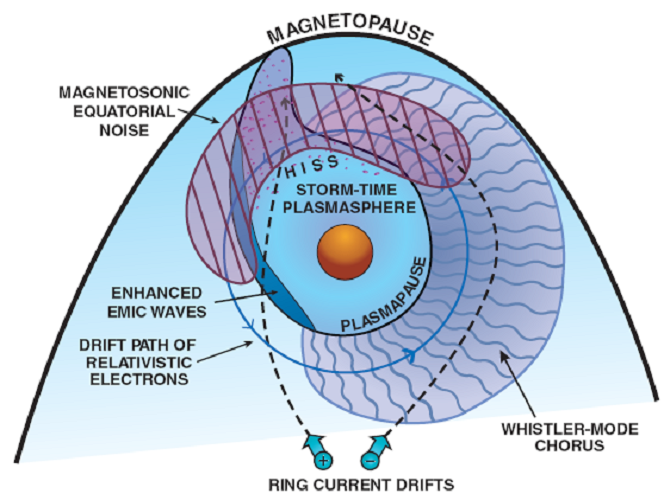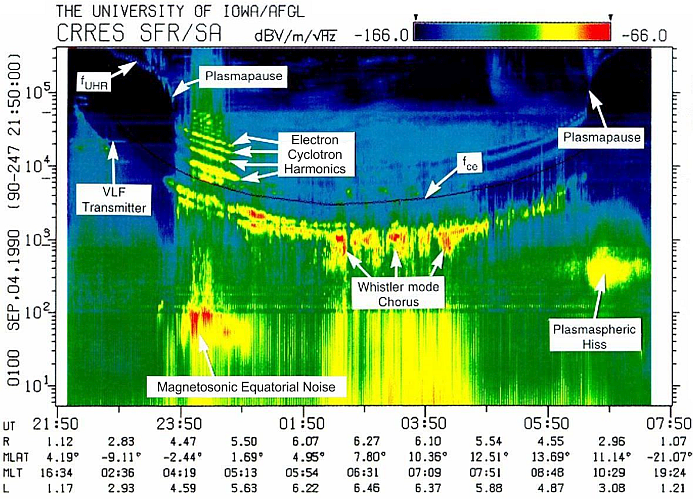Electromagnetic waves in the Earth's magnetosphere
Electromagnetic waves play a key role in the energy transfer in the collisionless plasma environment of the Earth’s inner magnetosphere. Specifically, they are responsible both for the energization and losses of energetic particles trapped in the Van Allen radiation belts, controlling ultimately the trapped particle fluxes. These waves are observed over a wide range of frequencies, from less than 1 Hz up to a few MHz. We focus in particular on the analysis of waves in the extra low frequency / very low frequency ranges (ELF/VLF, frequencies from about 3 Hz to 30 kHz). The waves in this frequency range can interact with energetic particles in a particularly effective way, because their frequencies are not too far from the ion/electron cyclotron frequencies in respective interaction regions. Moreover, the ELF/VLF range is adequately covered by recent spacecraft instrumentation, allowing for extensive experimental studies.


We focus on the experimental analysis of various wave phenomena (natural chorus and hiss emissions, lightning generated whistler waves, waves generated artificially by VLF transmitters and power line harmonic radiation). Our aim is to understand their properties, propagation patterns throughout the Earth’s magnetosphere, and generation mechanisms. Multicomponent multipoint observations are often used to analyze spatiotemporal variability of the observed phenomena.
